TRENDNET TEW656BRG 3G Mobile Wireless N Router User Manual English TEW 656BRG 1 01
TRENDNET, Inc. 3G Mobile Wireless N Router English TEW 656BRG 1 01
TRENDNET >
Contents
- 1. Manual 1
- 2. Manual 2
- 3. Hanging Clip guide
Manual 2
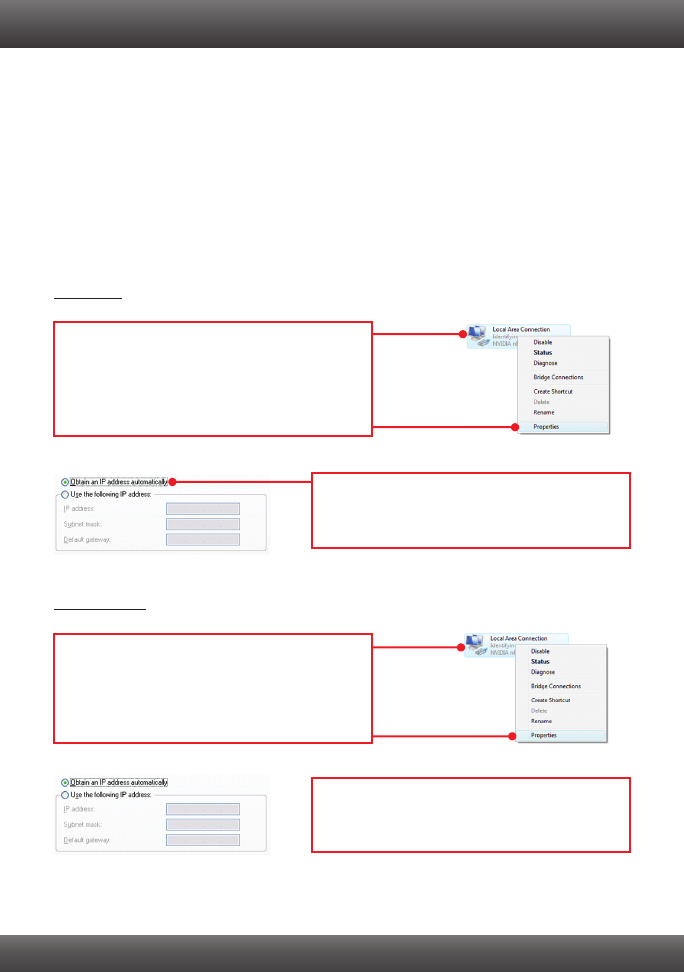
1. I typed http://192.168.10.1 in my Internet Browser's Address Bar, but an error message
says “The page cannot be displayed.” How can I get into the TEW-656BRG's web
configuration page?
1. Check your hardware settings again by following the instructions in Section 2.
2. Make sure the Wireless light is lit.
3. Enter http://192.168.10.1 into the browser instead. This is the default IP address of the
TEW-656BRG.
4. Make sure your network adapter's TCP/IP settings are set to Obtain an IP address
automatically (see the steps below).
5. Reset the TEW-656BRG. To reset the TEW-656BRG, press the WPS button for 20
seconds, then let go. Wait 30 seconds, and then type 192.168.10.1 into your browser.
Troubleshooting
Windows 7
Windows Vista
1. Go into the Control Panel, click Network and
Internet, click Network and Sharing Center,
click Manage Network Connections and then
right-click the Local Area Connection icon and
then click Properties.
2. Click Internet Protocol Version 4(TCP/IPv4)
and then click Properties. Then click on Obtain
an IP address automatically.
1. Go into the Control Panel, Network and
Internet, click Network and Sharing Center,
click Change Adapter Settings and then
right-click the Local Area Connection icon and
then click Properties.
2. Click Internet Protocol Version 4 (TCP/IPv4)
and then click Properties. Then click on Obtain
an IP address automatically.
9
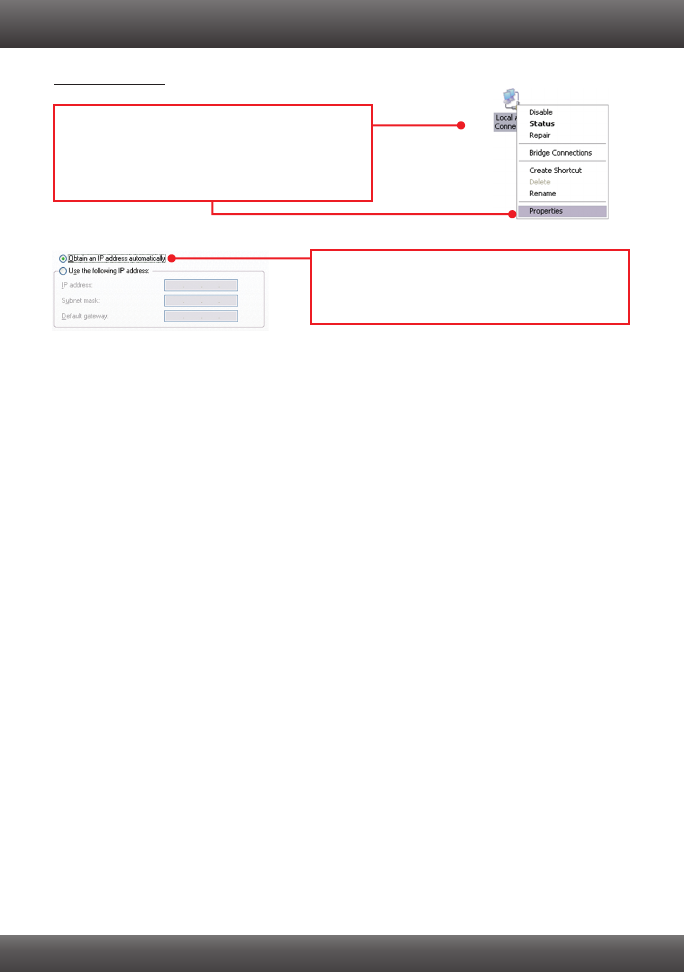
10
2. I am not sure what type of Internet Account Type I have for my Internet connection. How
do I find out?
Contact your Internet Service Provider's (ISP) support service for the correct information.
3. I went through the Wizard, but I can not get onto the Internet. What should I do?
1. Verify that you can get onto the Internet by connecting your 3G USB adapter directly to
your computer.
2. Contact your ISP and verify all the information that you have in regards to your Internet
connection settings is correct.
3. Verify that the 3G USB adapter is firmly connected to the USB port on the TEW-656BRG.
4. Power cycle the TEW-656BRG. Move the power switch to the off position. Wait 30
seconds, then move the power switch back to the on position.
4. I cannot make a wireless connection to the TEW-656BRG. What should I do?
1. Double check that the wireless LED on the TEW-656BRG is lit.
2. Power cycle the TEW-656BRG. Move the power switch to the off position. Wait 30
seconds, then move the power back to the on position.
3. Contact the manufacturer of your wireless network adapter and make sure the wireless
network adapter is configured with the proper SSID. The default SSID is
TRENDnet656.
4. Please refer to the Wireless tips section if you continue to have wireless connectivity
problems.
If you still encounter problems or have any questions regarding the TEW-656BRG, please contact
TRENDnet's Technical Support Department.
2. Click Internet Protocol (TCP/IP) and then click
Properties. Then click on Obtain an IP
address automatically.
Windows XP/2000
1. Go into the Control Panel, double-click the
Network Connections icon and then right-click
the Local Area Connection icon and then click
Properties.

The following are some general wireless tips to help minimize the impact of interference within an
environment.
Assign your network a unique SSID
Do not use anything that would be identifying like “Smith Family Network”. Choose
something that you would easily identify when searching for available wireless networks.
Do not turn off the SSID broadcast
The SSID broadcast is intended to be on and turning it off can cause connectivity issues.
The preferred method of securing a wireless network is to choose a strong form of encryption
with a strong and varied encryption key.
Change the channel
Most wireless access points and routers are defaulted to channel 6. If you have a site survey
tool that will display the channels you can plan your channel selection around neighboring
access points to minimize interference from them. If your site survey tool does not display
the channel try using channels 1 or 11.
Change the channel bandwidth
If you are using an 802.11n router or access point you can also make the following changes.
Change the channel bandwidth to 20/40MHz. This will provide the highest possible
performance using an 802.11n device. Also, if using 802.11n you should be securing the
network with WPA2 security.
Avoid stacking hardware on top of each other to prevent overheating issues
Maintain enough free space around the hardware for good ventilation and airflow. There
should also be plenty of free space around the antennas to allow the wireless signal to
propagate. Please also make sure that the wireless hardware is not placed in any type of
shelving or enclosures.
There are a number of other environmental factors that can impact the range of wireless
devices.
1. Adjust your wireless devices so that the signal is traveling in a straight path, rather than at
an angle. The more material the signal has to pass through the more signal you will lose.
Note: after setting up the SSID, encryption type and encryption key/passphrase, please
make a note of them for future reference. You will need this information to connect your
wireless computers to the wireless router/access point.
Note: Due to Wi-Fi certification considerations if you choose WEP, WPA or WPA2-TKIP
encryption this device may operate in legacy wireless mode (802.11b/g). You may not get
802.11n performance as these forms of encryption are not supported by the 802.11n
specification.
Wireless Tips
11

2. Keep the number of obstructions to a minimum. Each obstruction can reduce the range of
a wireless device. Position the wireless devices in a manner that will minimize the amount
of obstructions between them.
3. Building materials can have a large impact on your wireless signal. In an indoor
environment, try to position the wireless devices so that the signal passes through less
dense material such as dry wall. Dense materials like metal, solid wood, glass or even
furniture may block or degrade the signal.
4. Antenna orientation can also have a large impact on your wireless signal. Use the wireless
adapter's site survey tool to determine the best antenna orientation for your wireless
devices.
5. Interference from devices that produce RF (radio frequency) noise can also impact your
signal. Position your wireless devices away from anything that generates RF noise, such
as microwaves, HAM radios, Walkie-Talkies and baby monitors.
6. Any device operating on the 2.4GHz frequency will cause interference. Devices such as
2.4GHz cordless phones or other wireless remotes operating on the 2.4GHz frequency
can potentially drop the wireless signal. Although the phone may not be in use, the base
can still transmit wireless signals. Move the phone's base station as far away as possible
from your wireless devices.
If you are still experiencing low or no signal consider repositioning the wireless devices or installing
additional access points. The use of higher gain antennas may also provide the necessary
coverage depending on the environment.
12
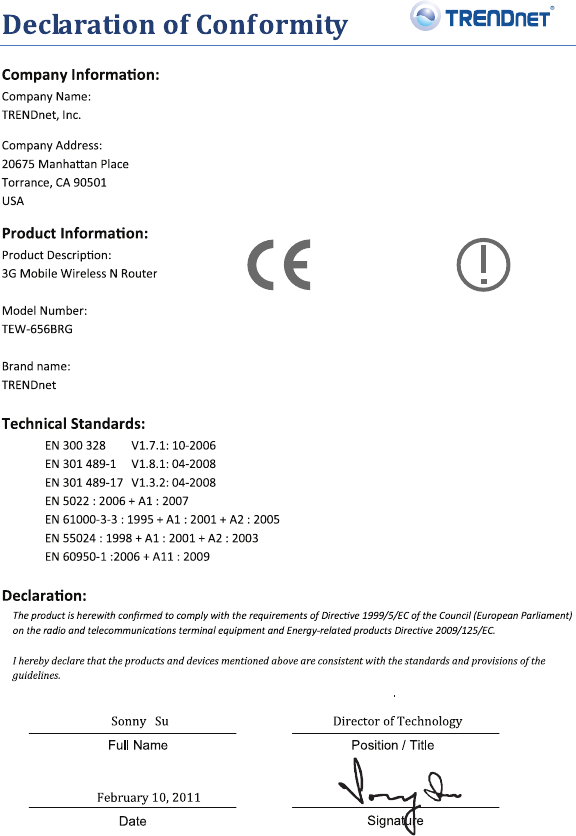
0984
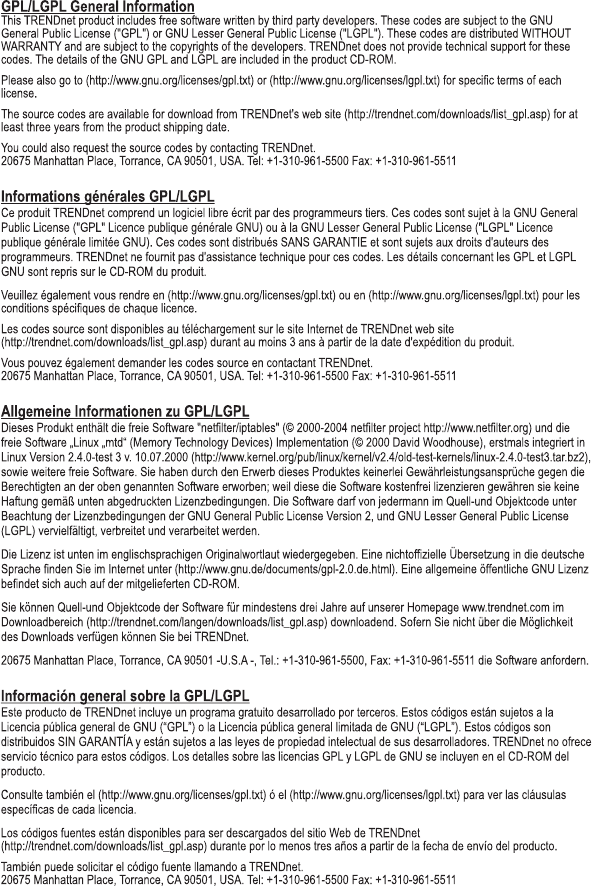
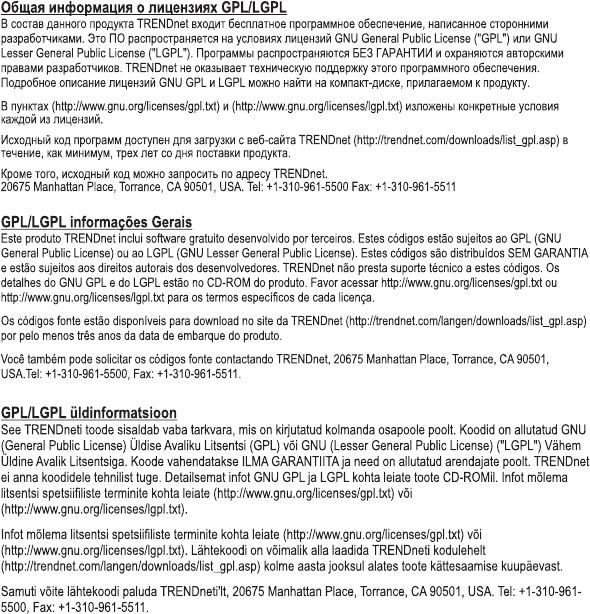
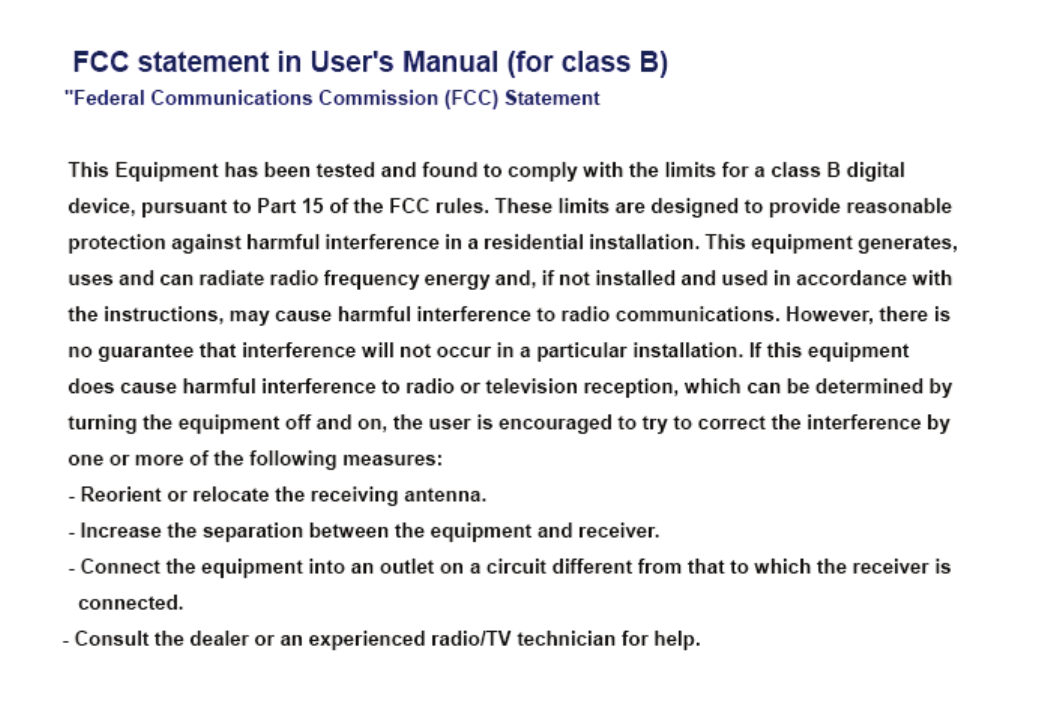
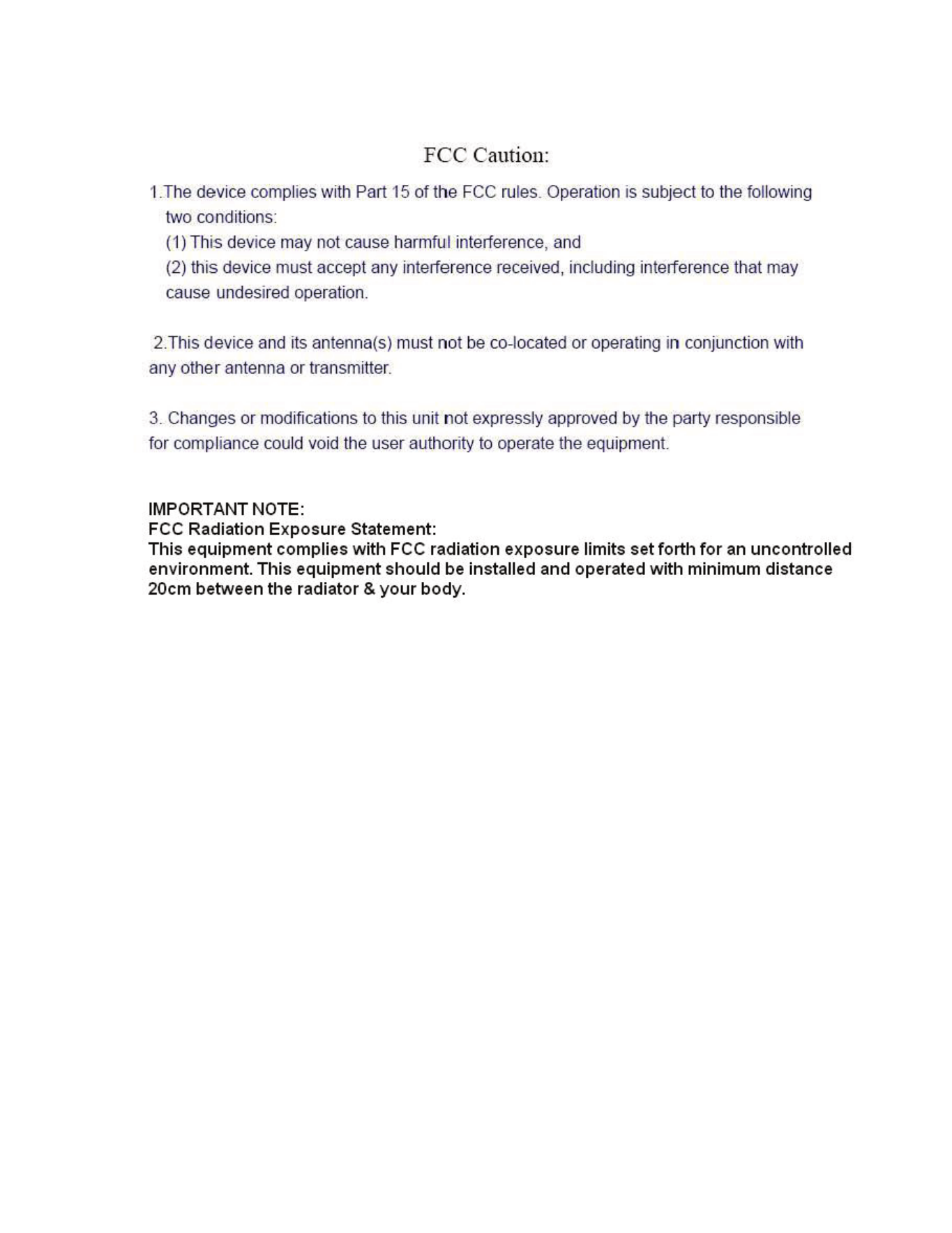
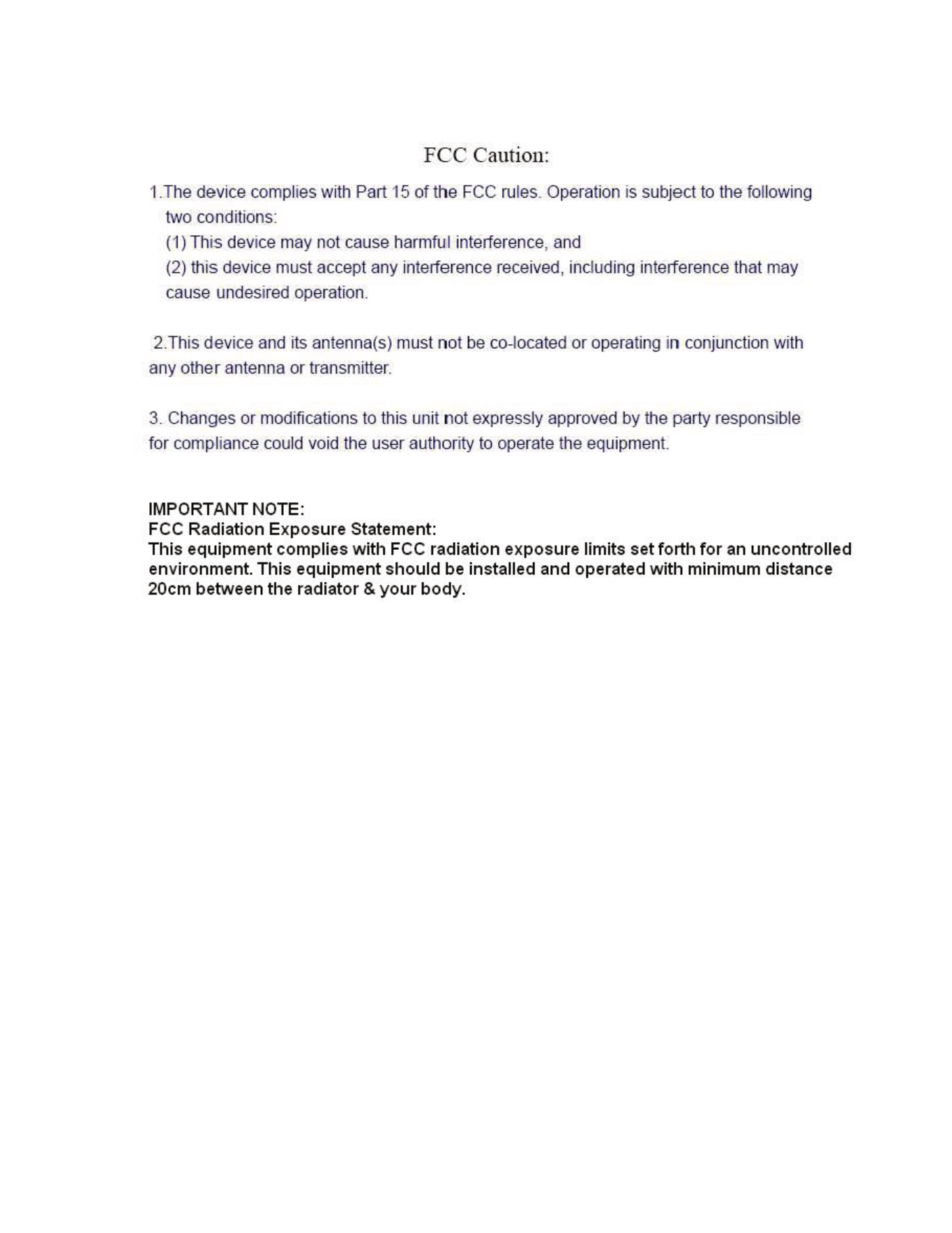
For Portable Configuration
For Mobile Configuration
IMPORTANT NOTE:
Federal Communication Commission (FCC) Radiation Exposure Statement
This EUT is compliance with SAR for general population/uncontrolled exposure limits in ANSI/IEEE C95.1-1999
and had been tested in accordance with the measurement methods and procedures specified in OET Bulletin 65 Supplement C.
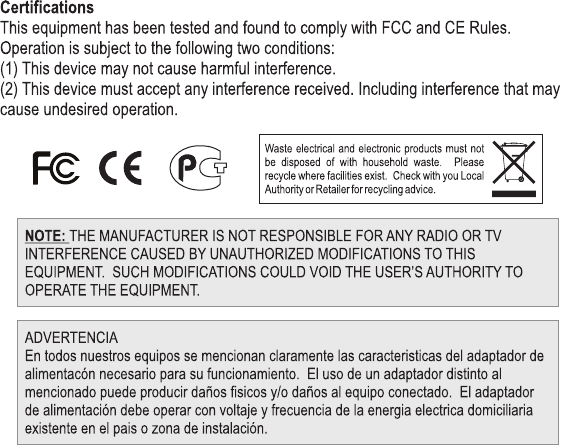
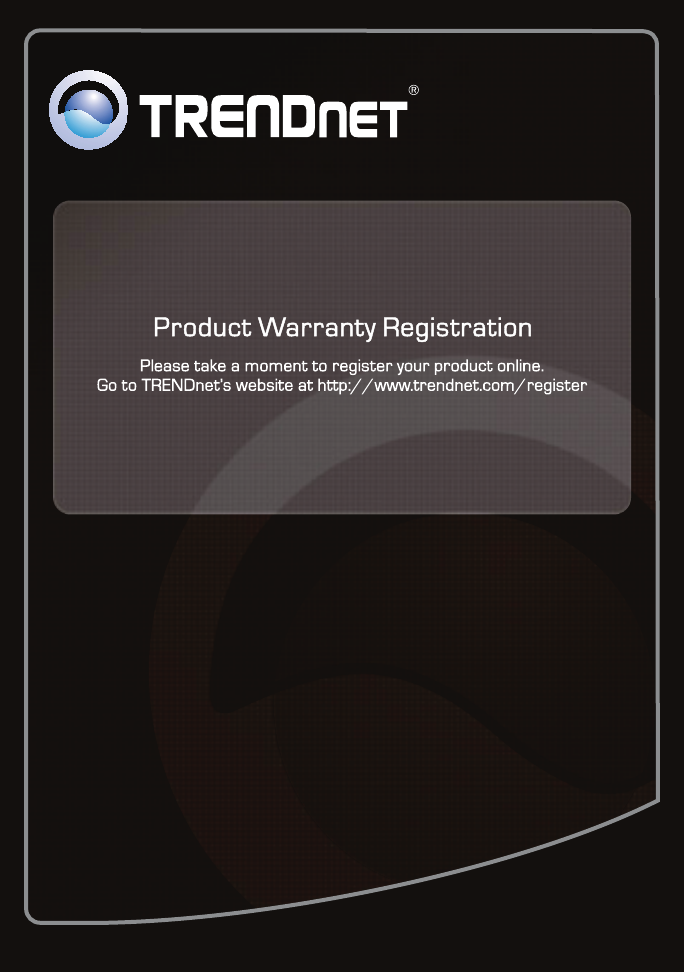
Copyright © 2011. All Rights Reserved. TRENDnet.